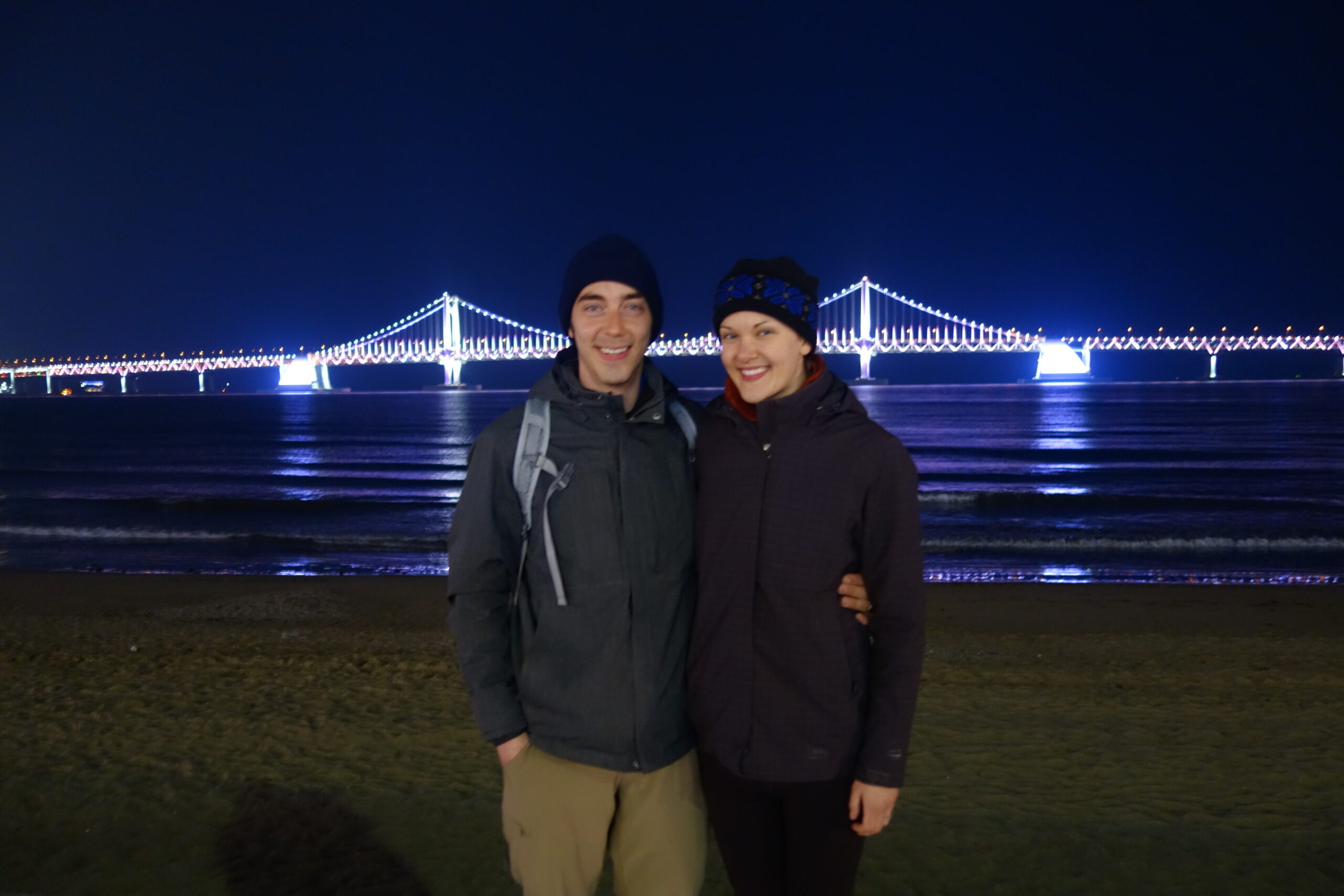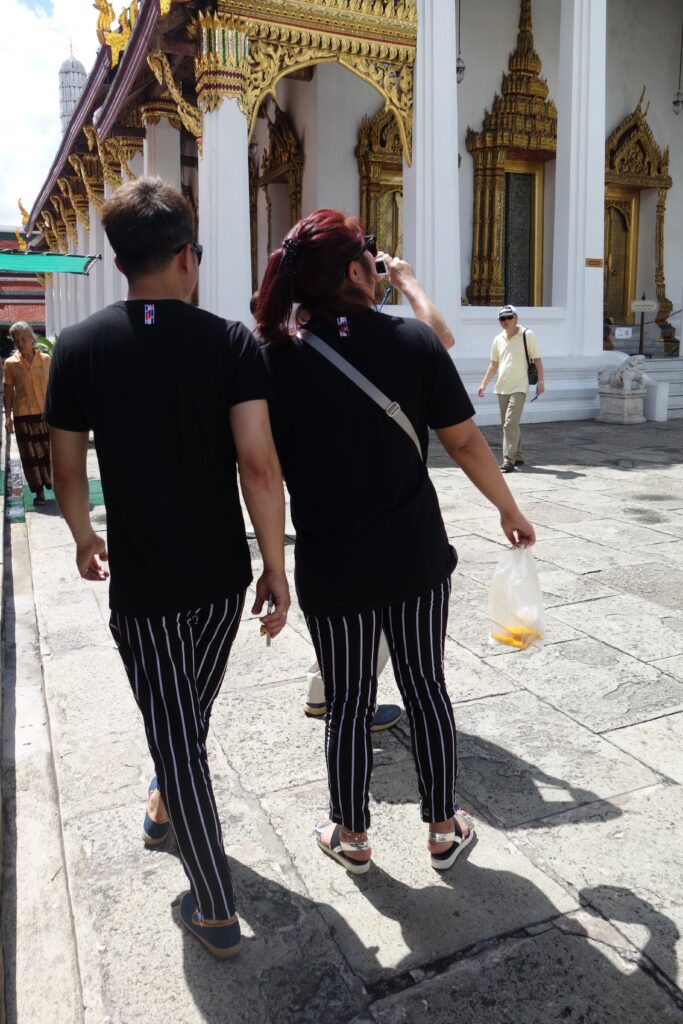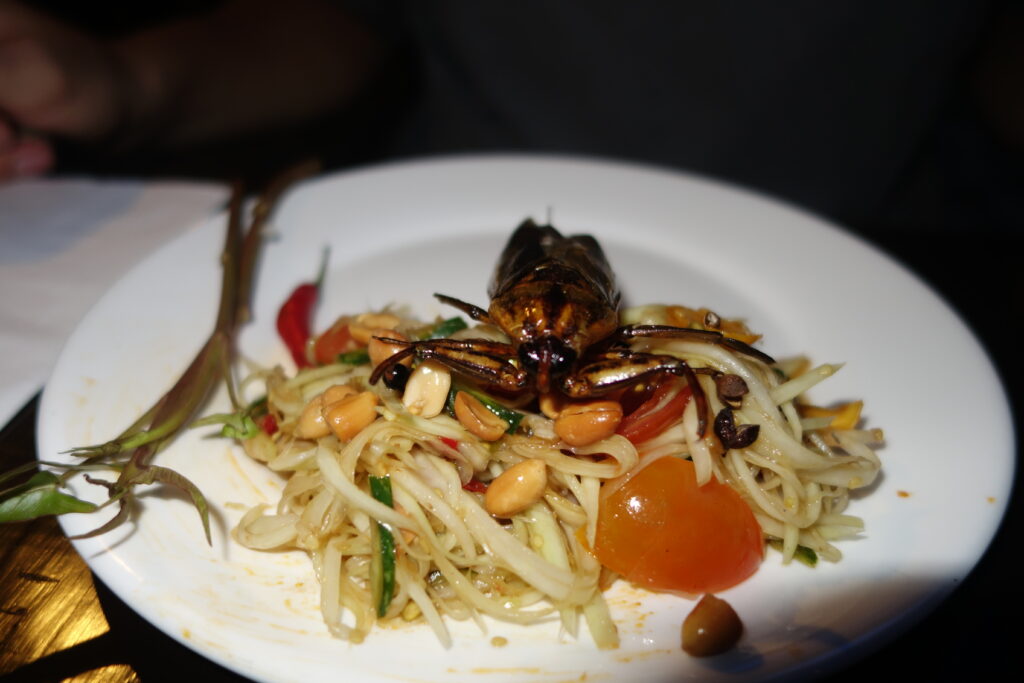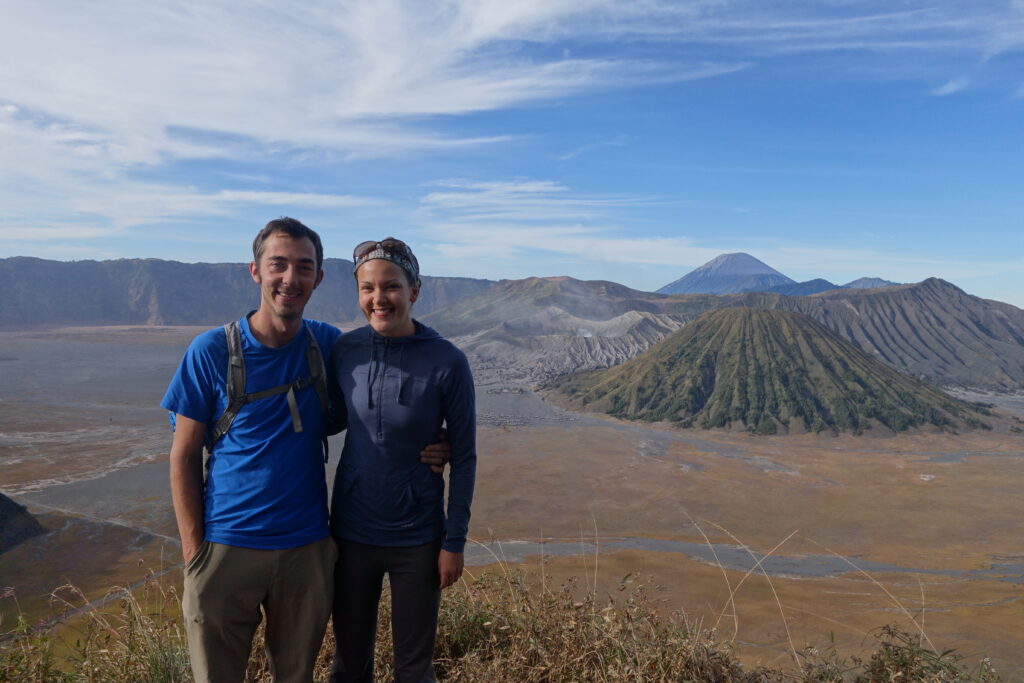With a little time behind us to reflect (we’re in Japan now!) we thought we could put together a few of our highlights from Korea. The following are some of the most interesting places we’ve been, observations we’ve made, and experiences we’ve had.
Interesting Places:
- Seoraksan National Park has been described as Korea’s version of Zion National Park (Utah). That might be stretching it a little, but it is a phenomenally beautiful park. Fairly close to the border with North Korea, the mountain range that Seoraksan is part of extends all the way down to Taebaek Korea. The geology of the park is large granite monoliths protruding into the sky like giant spikes. Some of the peaks are smoother with visible shearing action where the granite has flaked off that resemble peaks in Sequoia NP. Others are much more jagged. The park has several well developed trails, many of which contain stairs with handrails up the side of the mountain where hiking directly would be impossible or too dangerous. We were not able to hike all of them, as many were very steep and icy. The crampons we obtained gave us some ability to continue but without trekking poles and full winter camping gear you can only hike so far in a day. Some representative pictures are visible by clicking here and here.
- Haesindong Park is colloquially referred to as Korea’s “Penis Park”. As myth has it, a fisherman left his wife on a rock at sea in the morning when he went to fish (Why? The legend doesn’t say.) and before he could pick her up a storm rolled in and she drowned. Immediately afterwards the fishermen in the village could not catch any fish. The problem persisted until one day when a fisherman urinated in the direction of the sea and the fish began to return. Coming to the only logical conclusion, the villagers deduced that it was the dead woman (who in this part of the story is suddenly referred to as a virgin, despite being married…) who was the cause of the lack of fish and that the fisherman revealing his genitalia to the sea appeased her troubled ghost soul. Doing what any sane person would do, the fishermen constructed penis shaped statutes and erected them towards the sea to appease her spirit. The festival where such statutes were built continues annually to this day. The result is a park on the shore of the ocean that is full of various phallic shaped objects. Phallic statues, benches, weather vanes, see-saws, and cannons can be seen in the park.
- Hwaseongol cave is a giant limestone cave with the longest single passage of any known cave in the world. It’s large caverns are filled with the standard cave abiota, from stalactites and stalagmites to soda straws, cave coral, flowstone, cave bacon (yes, that is actually a thing), and other strange things. There is not much more to be said about the cave except a small piece of advice for any future travelers who may stumble across this blog. It was faster for us to hike up to the cave than to take the monorail. This was true for us in the winter when there was no queue for the monorail – we’ve read it is only a larger difference in the summer when there is a queue for the monorail. It was admittedly a steep hike that wouldn’t be good for small children, but if you are a fit adult you can save about 8 dollars and five minutes by just hiking up from the spot the bus drops you off.
Interesting experiences:
- Karaoke in Korea does not resemble a western karaoke experience. When our host, Dongho, invited us out for Karaoke, we expected to go to a bar and watch people drunk on soju perform. Instead, we entered a smoky building (passing someone smoking in the bathroom) where we were ushered into our own private room with a couch, a small table, and of course a karaoke machine. We paid for an hour of use and commenced singing. There were a couple binders with song lists where we found many classic American artists as well as Korean artists. Dongho performed all of the songs flawlessly, including the songs in English, while we struggled to keep up. Koreans are serious about Karaoke! It’s worth mentioning that this experience was entirely alcohol free.
- The sauna experience is a must when visiting Korea. It is very affordable (~$5/person) and can be very relaxing. We were able to visit two saunas, one in Yangyang and the other in Busan. The sauna in Yangyang had a partially outdoor, hot-spring-fed facility. We sat outside in a small hot tub, where we would have had a nice view of the stars if it hadn’t been cloudy. There were also a few pools indoors of variable temperatures. Sunny, our CS host who brought us there, explained that after soaking in the tubs for a while, it is standard for a person to shower off and spend a good long while scrubbing their entire body with a scrub pad. This facility was a small sauna in a rural area, so that pretty much sums up the sauna in Yangyang. We also visited Hurshimchung spa in Busan, which claims to be the largest spring-fed spa in the world. Here there was a very large indoor facility, separated by gender. There were many different pools of variable sizes and depths, with their temperatures on display. There was a small water fountain, a mini lap-style pool, and an area where dense streams of water fell from the ceiling and could be stood under or sat under to massage achy muscles. There were pools with different scents and colors, sauna rooms of various temperatures and humidities, and a small outdoor section with a hot tub, cold tub, and sauna. After showering off and renting a dorky matching shirt and shorts outfit, one can visit the co-ed section downstairs called a jimjilbang where there were igloos of variable temperatures, a scent room, an oxygen room, a large space for lounging and watching TV, gender segregated sleep rooms as well as other facilities with additional fees. We had fun exploring the different areas and trying not to do anything stupid (as we had no guide to show us the ropes this time)! Oh, and did we mention that in the spa portion you’re expected to be nude? No pictures here, sorry.
- On most of our hikes in different portions of Korea the trails were well marked with frequent trail markers. Many looked fairly new and I suspect that a portion of Korea’s recent significant investment in promoting tourism has gone into improving the trails. On the other hand, when we went hiking in a less popular and less developed area the exact opposite was the case. The number of different intersecting paths, many of which looked like they were formed from people cutting between better established paths, was mind boggling. In four hours of hiking we encountered literally dozens of forks in the trail. Out of those, exactly 4 were marked. Many places even had two trails running parallel only 15 feet apart! In the U.S. there are usually a few major paths, and desire paths between them or to other places are usually marked off. Upon reaching the summit of Mt. Jangsan, we tried our hardest to stick to the main path because it was the most efficient route down. This ended up being a very difficult task; the trail split numerous times and dwindled down to tiny trails. At one point, the trail ended at a road, so we decided to follow the road down. Shortly after beginning this way, the road suddenly ended with a big pile of dirt. Oh, and did we mention that old Korean war landmines were scattered about (though well marked)? Luckily, the trail continued behind this portion of unfinished road. We made it to the bottom of the trail just before sunset and discovered these awesome tools for mud removal:
Cultural differences:
- When dating in Korea, it seems to be very important to outwardly display your affection for each other. This is seen in various ways, from going to a popular site to attach a love lock, to taking endless selfies, to buying matching jackets. Yes, couples buy expensive multi-hundred dollar matching (or complimentary) winter jackets, backpacks, and shoes. What happens when they break up? The couple gear gets discarded. Consumerism: 1, environment: 0.
- It’s 6am. You’ve woken up early because you haven’t fully adjusted to the time change. You’re staying with a couch surfing host who is still asleep, perhaps nursing a hangover, and to avoid bothering them you figure you’ll go get a coffee and hang out at the coffee shop for a few hours. Fortunately, the streets of Korea are literally brimming with coffee shops so this should be easy. Coffee drinking is a relatively new phenomenon in Korea and (like the hiking gear fad) Koreans have adopted coffee with reckless abandon. However, there is a subtle difference in the culture surrounding coffee. For Koreans, getting coffee is a social event or fancy treat, not a morning necessity. So imagine our surprise when, trying to get our morning coffee, we discover that virtually none of the coffee shops open before 9am! Want to get coffee on your way to work? Nope – nobody does that in Korea apparently. Make it at home, go without, or wait until later in the day. For us American Joe junkies this was quite the surprise. Fortunately we were near a university area and were able to find a 24 hour coffee shop, though such shops are relatively rare. Perhaps in a few years once people in Korea are more strongly addicted to their morning cup the shops will open earlier. 🙂 We picked up some instant coffee packages to ensure we wouldn’t wind up in a similar situation in the future.
- Even though English is taught in schools in Korea, it isn’t spoken frequently. The emphasis is placed on writing, grammar, and exam prep and the students pass their tests with flying colors. The students get few opportunities to actually practice speaking English. Unfortunately, in a shame-based culture this translates into a speaking fear. If a person is not confident in their English speaking abilities, he or she would avoid speaking English like the plague. They are afraid to attempt to speak, make a mistake, and therefore look foolish. Especially for those who have been out of school for a while and do not remember much from English class, they wouldn’t say a peep to you in English, even if they essentially understand what you are saying. In stark contrast, those who do speak English well (less than 10% of the population) are often really excited to practice their speaking skills. We were actually approached at a park by a retired English teacher who lived in the US for a year. He talked at us for hours and would have continued to spend time with us for as long as we would let him. It actually got creepy and we had to make up an excuse to leave!





Love the blogs- they’re so fascinating. Keep them coming.